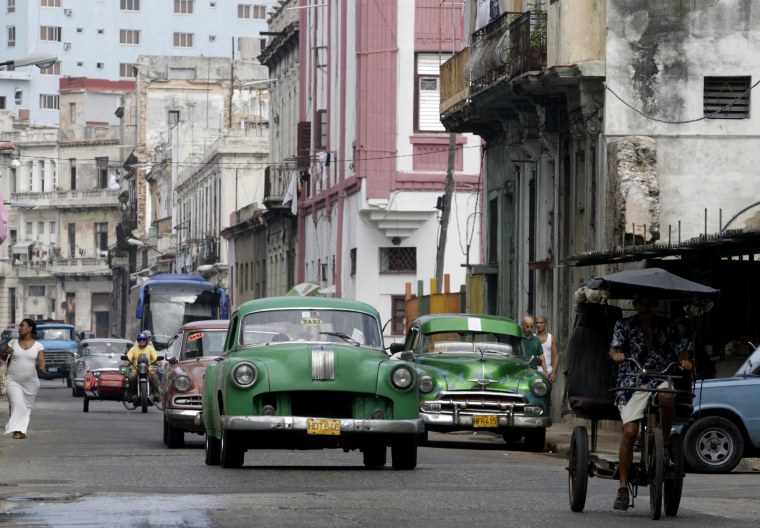Contrary to popular belief, car collectors will not be descending on Cuba to buy up the thousands of antique American cars still on the road in the Caribbean nation.
"We just don't see it," said McKeel Hagerty, CEO of Hagerty Insurance, which specializes in insuring collector cars.
Cuba is a bubble of anachronisms, one of the most obvious being the thousands American cars from the 1940s and 1950s, which still make up a significant form of transportation for the island nation.

The time-warp feel of the place stems from the imposition of the U.S. embargo in 1962, during which American companies were no longer permitted to do any business in Cuba. Once in place, it was not possible for Cubans to get new American cars or parts.
Fidel Castro's autocratic socialism was the final nail in the coffin of the new car market — Cubans weren't permitted to buy cars. They could only be given them by the government. And the government never had enough money to import cars en masse from Europe or Asia. During the Soviet era, Russia sent Ladas, which, despite being newer, didn't last as long as the American cars.
Experts who spoke to CNBC expressed deep admiration for the ingenuity that has kept the American cars on the road, but it's that very same ingenuity that will likely cut into the value of the cars. "They're known to be held together by duct tape and bailing twine," said David Magers, CEO of Mecum Auctions.
Cuban students learn about U.S. entrepreneurship
"From our perspective, there's not a lot of enthusiasm for bringing those cars to the U.S. market," Magers said.
The "intrinsic value in collector cars is in the originality of its parts," said Steve Linden, an appraiser of collectible automobiles. Most important, he said, are "original body, panels, engines, transmissions."
It doesn't take long for an expert to see that there's little that's original left in the American cars on the roads of Cuba — most of which are General Motors models — except the body.
Hagerty recalled one of his first experiences with the island's cars on a trip their 15 years ago: "When I went, I jumped in a 1956 Cadillac, and it looked really good. The guy turned the key and it had a Peugeot diesel engine."
Hagerty likened it to a "Galapagos Island" of cars. "Because they've been cut off for so long, they've morphed into their own species. It's not a Cadillac. It's something else."
Are muscle cars a good investment?
To use an example of how that affects valuation, Linden said a quintessential American car like a 1957 Chevy Bel Air four-door sedan, in perfect condition with original parts, could sell for as much as $50,000. The same model in Cuba, with a large dollop of Bondo body filler and substitute parts, would probably sell for only $5,000.
Additionally, the sweet spot of car collecting has moved from the 1950s. "What's hot right now are the American muscle cars of the late '60s and '70s," Magers said. Models such as Ford Mustangs from 1965 to 1973, Dodge Challengers, Chargers and Daytonas are hot, plus the Shelby Plymouth Superbird.
The greatest interest is likely to come from Cuban exiles who are proud to buy a car that is quintessentially Cuban, and representative of the era. Hagerty said that a car from there "will be considered on the merits of it being a 'Cuban' car, not a classic collectible."
At the same time, Hagerty said he expects there to be a great desire by the Cubans themselves to keep them on the island "as an example of the last vestige of the spirit of survival.”
“There's something down there about these cars that means more to them than just a car,” he said. "It's like jazz. It's one of their art forms."